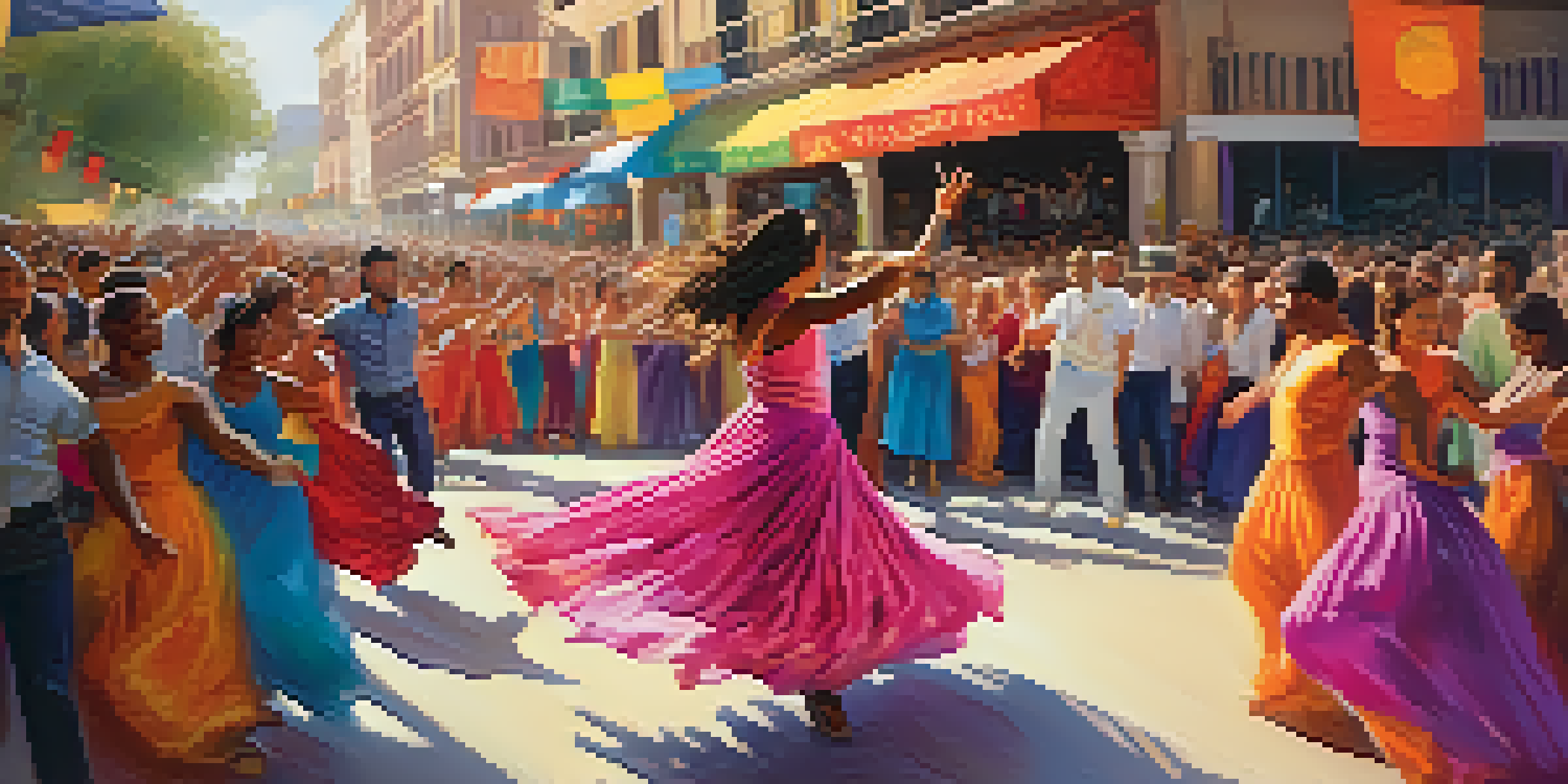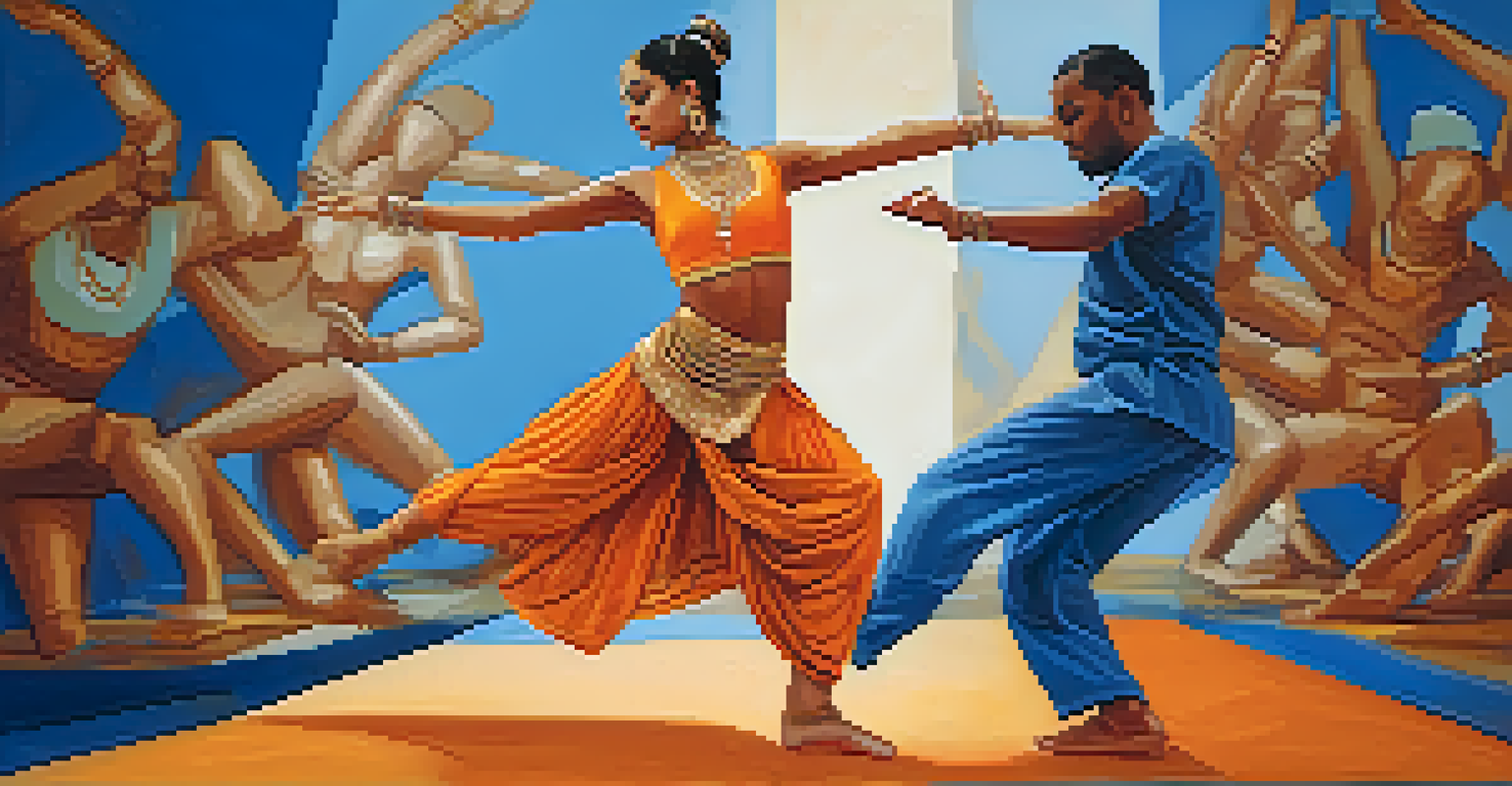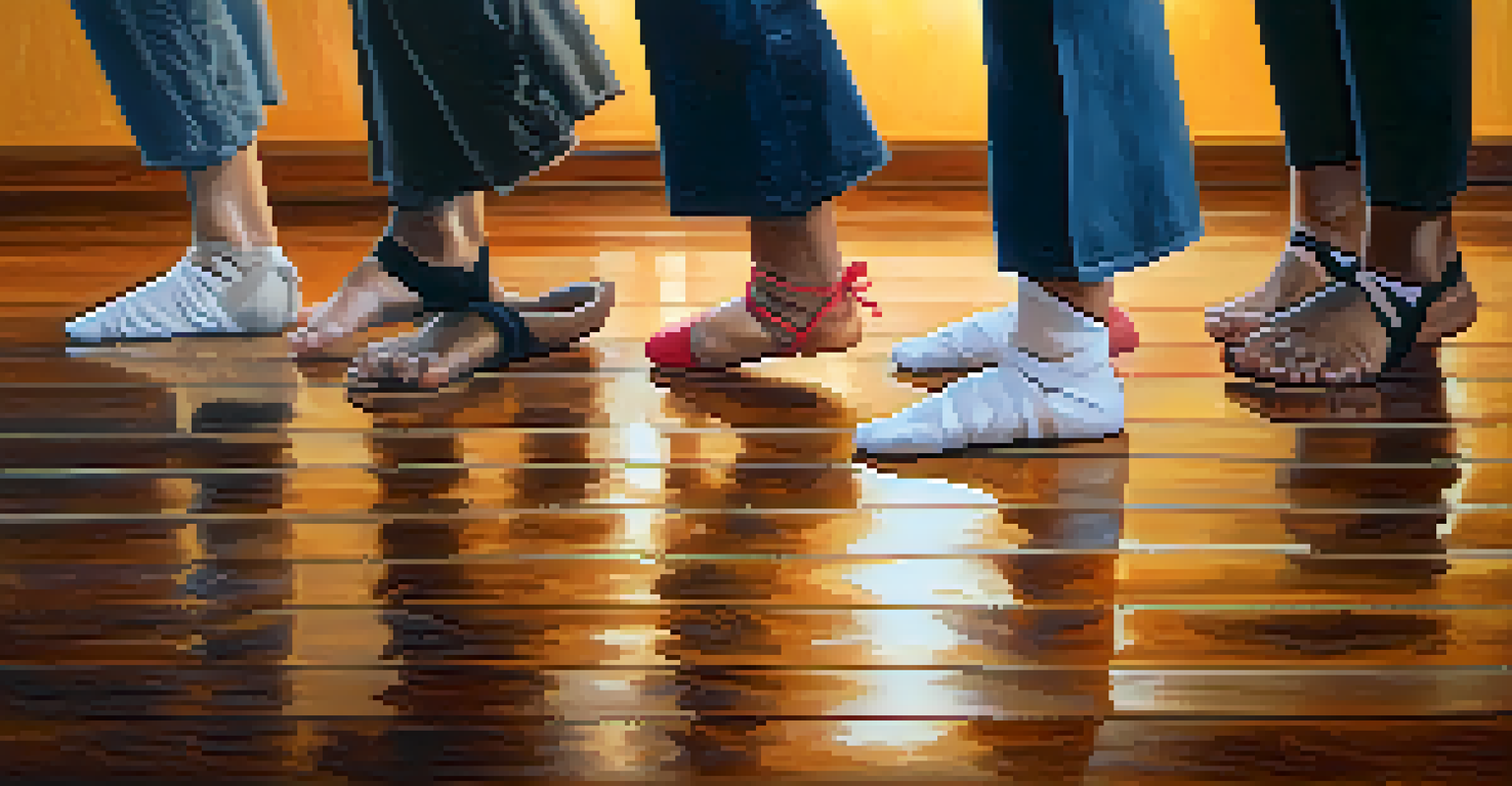Exploring the Impact of Cultural Exchange on Dance Evolution

Understanding Cultural Exchange in Dance
Cultural exchange refers to the sharing of ideas, traditions, and practices between different societies. In the realm of dance, this exchange can lead to the fusion of various styles, resulting in innovative forms of expression. Think of it like a melting pot, where ingredients from diverse cultures come together to create a unique dish that reflects a broader culinary experience.
Dance is the hidden language of the soul.
When dancers travel or collaborate across borders, they bring their own influences, rhythms, and techniques. This interaction not only enriches their own practice but also introduces audiences to new ways of moving and feeling. For instance, the blending of African dance with ballet has given rise to contemporary styles that are now celebrated worldwide.
In essence, cultural exchange in dance is about embracing diversity and fostering creativity. It allows artists to break free from traditional confines, encouraging experimentation and the birth of new genres that resonate with a global audience.
Historical Context of Dance Evolution
To appreciate the impact of cultural exchange on dance, we must first consider its historical context. Dance has always been intertwined with societal changes, from the ancient rituals of indigenous cultures to the extravagant court dances of Europe. Each era brought unique influences that shaped dance forms.

For example, the Renaissance period saw a significant exchange of ideas between Italy and France, leading to the development of ballet as a formal art. This was a time when artists traveled extensively, sharing techniques and styles that would later influence modern dance. Thus, history plays a crucial role in understanding how dance evolves through cultural interactions.
Cultural Exchange Enriches Dance
Cultural exchange in dance fosters creativity and innovation by blending diverse styles and traditions.
By examining the past, we can see how dance is not just an art form but a reflection of cultural dialogues. These historical exchanges laid the groundwork for future innovations, bridging gaps between cultures and creating a rich tapestry of movement that continues to inspire artists today.
The Role of Technology in Cultural Exchange
In today's digital age, technology serves as a catalyst for cultural exchange in dance. Platforms like social media enable dancers from different backgrounds to connect, share, and collaborate like never before. A dancer in Brazil can learn a traditional Indian dance style through online tutorials, showcasing the power of technology in fostering cultural appreciation.
The dance is a poem of which each movement is a word.
Moreover, video-sharing platforms allow for the instant dissemination of dance performances across the globe. This not only democratizes access to diverse dance forms but also encourages cross-cultural collaboration. For example, viral dance challenges often blend multiple styles, inviting participants to explore and contribute their unique perspectives.
As technology continues to evolve, it will undoubtedly shape the future of dance and cultural exchange. The ability to learn and collaborate remotely opens doors for innovative performances that celebrate a blend of influences, ensuring that the evolution of dance remains vibrant and dynamic.
Influence of Migration on Dance Styles
Migration has always played a significant role in the evolution of dance. When people move from one place to another, they carry their cultural practices with them, including their dance traditions. This blend of influences can lead to new styles that reflect the experiences of diverse communities.
Take, for instance, the influence of African diasporic cultures on the development of jazz and hip-hop in the United States. These dance forms emerged from a rich tapestry of cultural histories, where African rhythms met European musical traditions. The result is a vibrant expression that continues to evolve as new generations reinterpret it.
Migration Shapes Dance Evolution
Migration introduces new dance styles and cultural dialogues, reflecting the experiences of diverse communities.
Migration not only introduces new dance styles but also creates spaces for cultural dialogue. This exchange fosters community and understanding, enriching the dance landscape with layers of meaning and history that resonate with audiences worldwide.
Fusion Dance: A Celebration of Diversity
Fusion dance is a perfect example of how cultural exchange can lead to exciting new forms of expression. By blending elements from different dance styles, artists create innovative performances that celebrate diversity and challenge traditional norms. This approach encourages collaboration and experimentation, resulting in unique and captivating works.
Consider the rise of styles like Bollywood fusion, which combines traditional Indian dance with contemporary Western influences. This not only broadens the appeal of Indian dance but also creates a space for cultural dialogue and appreciation. Audiences are drawn to the vibrant energy and creativity that emerges from such fusions.
Ultimately, fusion dance exemplifies the beauty of cultural exchange. It highlights how diverse influences can come together to create something new and exciting, enriching the dance community and inspiring future generations of artists.
Dance Festivals: A Hub for Cultural Exchange
Dance festivals around the world serve as vibrant hubs for cultural exchange, bringing together artists from various backgrounds to showcase their work. These events offer a platform for performers to share their cultural heritage while learning from one another. Festivals like the Edinburgh Festival Fringe or the Montreux Jazz Festival celebrate this diversity, attracting audiences eager to experience global dance forms.
During these festivals, dancers collaborate, participate in workshops, and engage in discussions that foster mutual understanding and respect. This environment encourages the exploration of different styles and techniques, creating a melting pot of creativity. It's not uncommon to see a flamenco dancer join forces with a hip-hop artist, resulting in thrilling performances that resonate with diverse audiences.
Fusion Dance Celebrates Diversity
Fusion dance exemplifies how combining different influences results in unique performances that inspire and engage audiences.
The magic of dance festivals lies in their ability to break down barriers and promote cultural exchange. They create a sense of community among dancers and audiences alike, highlighting the universal language of movement that transcends cultural divides.
The Future of Dance and Cultural Exchange
As we look to the future, the impact of cultural exchange on dance continues to evolve. With ongoing globalization and advancements in technology, we can expect even more dynamic interactions between diverse dance forms. This opens up exciting possibilities for artists to innovate and experiment, pushing the boundaries of what dance can be.
Moreover, as awareness of cultural appropriation grows, there is a greater emphasis on respecting and honoring the origins of various dance styles. This shift encourages artists to engage in meaningful collaborations that celebrate authenticity while acknowledging the rich histories behind the movements.

The future of dance is bright, with cultural exchange at its heart. By embracing diversity and fostering collaboration, we can look forward to a continuously evolving dance landscape that reflects the beauty of our interconnected world.